- Planet Earth
- Origin and formation of planet Earth
- Characteristics of planet Earth
- Composition and structure of planet Earth
- Movements of the planet Earth
- Magnetic field of Planet Earth
- Appearance of life on planet Earth
- Moon
- Solar system
- Milky Way
We explain everything about planet Earth, its origin, the emergence of life, its structure, movement and other characteristics.
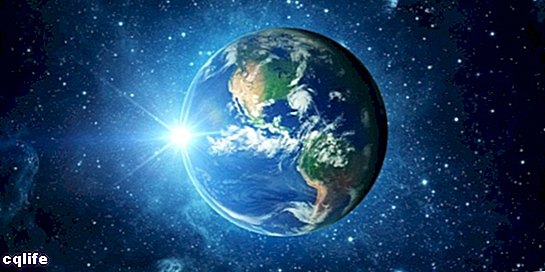
Planet Earth
We call Earth, planet Earth or simply Earth, at planet in which we inhabit. It is the third planet of the Solar system starting counting from Sun, located between Venus and Mars. According to our current knowledge, it is the only one that harbors life in the entire Solar System. It is designated astronomically by the symbol ♁.
Its name comes from the Latin Terra, a Roman deity equivalent to the Gaea of the ancient greeks, associated with fertility and fecundity. It was popularly known as Tellus mater or Terra mater (mother Earth), because from her womb would come all living beings.
In other languages, such as English, the name of our planet may have non-Greco-Latin connotations, such as earth of the Anglo-Saxons.
Since time immemorial the human being He has dreamed of knowing the limits of the Earth and traveling all its corners. Ancient cultures they thought it infinite, or perhaps with an end that would be a fall into the abyss. Even today there are those who maintain that the Earth is flat, that it is hollow and other conspiracy theories.
However, thanks to the science and the technology, we currently have beautiful images of our planet. We also know how its inner layers are composed, as well as what was there before the human being appeared on its surface.
Origin and formation of planet Earth
The Earth was formed around 4.55 billion years ago, from the material from which the rest of the Solar System was made, which was initially a stellar cloud of gases and cosmic dust. The formation of the planet took between 10 and 20 million years, as its surface cooled and the cloud of gases that today is the atmosphere.
Eventually, through a long period of seismic activity and possibly due to the constant impact of meteors, the Earth had the necessary elements and the physical conditions essential for the appearance of the Water liquid.
Thanks to this, the hydrological cycle could have started, helping to cool the planet more quickly to levels where the life could have started. Over time, the large amount of liquid water on the surface gave our planet its blue hue when viewed from space.
Characteristics of planet Earth
Earth is the fifth planet in the Solar System in terms of size, and the only one capable of supporting life. It has a spherical shape with a slight flattening at the poles, and 12,756 km in diameter at the height of the Equator (an equatorial radius of 6,378.1 kilometers).
Its mass is 5.9736 x 1024 kilograms and its density 5.515 g / cm3, the highest in the Solar System. It also has a acceleration from gravity of 9.780327 m / s2.
Like other inner planets like Mars and Mercury, Earth is a rocky planet, with a solid surface and a core of metal liquid (by action of heat and of the Pressure of its own gravity), unlike other gaseous planets such as Venus or Jupiter. Its surface is divided between the gaseous atmosphere, the hydrosphere liquid and the geosphere solid.
Composition and structure of planet Earth
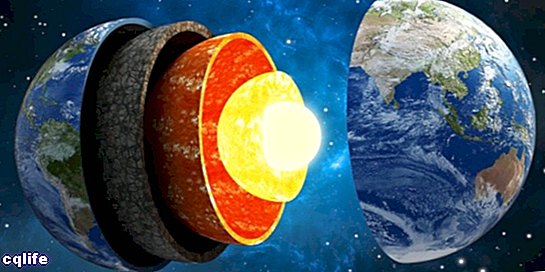
The land mass is made up of a diverse set of chemical elements. The most abundant elements are iron (32.1%), oxygen (30.1%), silicon (15.1%), magnesium (13.9%), sulfur (2.9%), nickel (1, 8%), calcium (1.5%) and aluminum (1.4%), leaving 1.2% for the rest of the elements.
It is estimated that its inner layers abound in iron and nickel, which would be responsible for the generation of your magnetic field or magnetosphere.
The planet is made up of concentric layers of matter that extend toward the core from the surface. These layers are:
- Lithosphere. It extends from the surface (0 kilometers deep) to about 60 kilometers inward, being the least dense layer of all and the only one that we can visit with concrete physical means. It is there where the tectonic plates, for example. The lithosphere is in turn divided into two distinct layers:
- Cortex. It ranges from 0 to 35 kilometers deep, being the layer where life is located, consisting mainly of solid silicates.
- Upper mantle. It ranges from 35 to 60 kilometers deep, and is composed mainly of extremely basic peridotitic rocks, from which the basalts could come.
- Terrestrial mantle. The mantle of the Earth goes from 35 kilometers deep, up to 2890, that is, to the outer part of the core. It is the widest layer of the internal structure of the Earth, rich in silicates, magnesium and iron, all in a semi-solid state and of variable viscosity. Within the mantle is the inner mantle and also the asthenosphere.
- Asthenosphere. A low layer viscosity comprising the upper zone of the earth's mantle, made up of silicate materials in solid and semi-molten or partially molten state, depending on its proximity to boiling magma. Tectonic plates move above the asthenosphere. This layer ranges from 100 to 700 kilometers deep.
- Core. The Earth's core is the "heart" of the planet, and it is composed mainly of ferromagnetic metals (iron and nickel), divided into two stages:
- External nucleus. Extending from 2,890 kilometers down to 5100 kilometers, this highly viscous liquid metal layer rests on the inner core and comprises mostly iron, with traces of lighter elements.
- Inner core. The true center of the Earth is a solid metal core, which rotates with an angular speed slightly higher than the rest of the planet, and which is responsible for the generation of its magnetosphere. It has a radius of approximately 1,255 kilometers and it is believed that its composition is 70% iron and 30% nickel, together with very small portions of other heavy metals such as iridium. lead and titanium.
Movements of the planet Earth
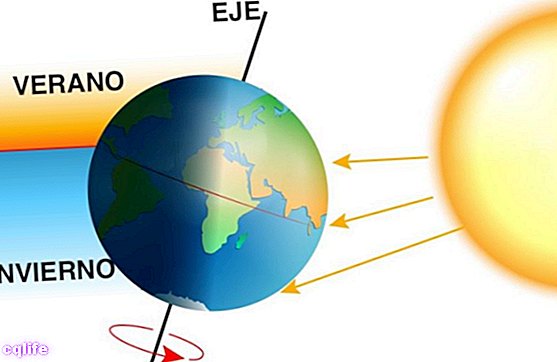
The Earth periodically executes two main types of movements:
- Rotation. A movement rotating on its own axis, exposing its surface to the sun intermittently and causing days and nights.
- Translation. This is the displacement of the planet along its solar orbit, describing more or less an ellipse as a trajectory. Every time we celebrate a year, one more turn of the planet around the Sun is completed.
On the other hand, the Earth's axis of rotation is tilted by approximately 23.5 degrees. It is because of this inclination that each hemisphere receives the Sun's rays more directly every six months (thus causing the change of the climatic seasons).
There are two other types of movements that, although we cannot perceive in our daily experience, are scientifically proven:
- Precession. It is a very slight movement of the earth's axis. Every 25,776 years the tilt of the axis changes enough so that the seasons are reversed.
- Nutation. It is a slight oscillation of the axis of rotation. It is due to the effect of the combination of gravity forces of the Earth, the Moon and the sun.
Magnetic field of Planet Earth

Our planet has a magnetosphere, arisen from the movement of its metallic core. This magnetic field has protected us since early times from the damaging solar wind. Without this protection, the forces of the Sun would have destroyed the atmosphere millions of years ago.
It is also the magnetic north according to which the compasses and migratory animals are oriented in their kilometric movements.
The Earth's magnetosphere extends beyond the ionosphere, some 500 km high, completely enveloping our planet. At the poles, its proximity to the Earth is greater, and its effects can be seen as the famous Aurora borealis and australes.
Appearance of life on planet Earth
Life appeared during the Precambrian, that is, the first and longest geological period of our planet. It dates back to the very beginnings of the planet, in the midst of torrential volcanic and electrical activity, some 4,000 million years ago.
At some remote instant, certain particular chemical conditions, thanks to the presence of liquid water on the planet, allowed the creation of self-replicating molecules, which grew in complexity and abundance, until giving rise to the formation of the first ones. cells about 3.8 to 3.5 billion years ago.
Those first organisms embarked on an evolutionary career from the diversification of the so-called LUCA (Last Universal Common Ancestor), the first common ancestor to all life forms existing today. Thus were born the basic energy processes that changed the world.
For example, the photosynthesis filled the atmosphere with oxygen and led to the subsequent appearance of the breathing. All this under the protection of the ozone layer of the atmosphere, without which ultraviolet radiation would have made the molecular preservation of the DNA, and without it, life as we now understand it.
Moon
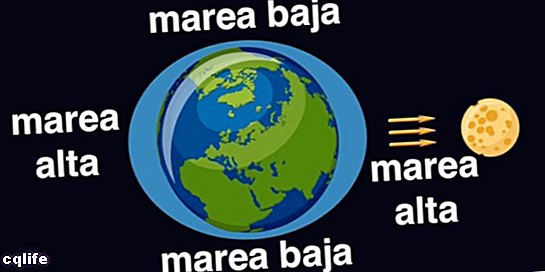
The Moon is the only natural satellite of our planet. Its origin dates back to the periods of the formation of the Earth itself, with which it shares some geochemical similarities. It has a radius of 1,738 kilometers and a rotation period identical to that of its translation in orbit around the Earth. Therefore, we always see the same side of the Moon.
The Moon has a mass of 7.349 x 1022 kg, 1/81 of the mass terrestrial, being the satelite largest in the Solar System in proportion to its ruling planet. Its attraction to our planet triggers the tidal phenomenon, which suggests that it played some kind of role in the climatic circuits that facilitated the appearance of life.
The most accepted theory about its origin is called The Great Impact. It supposes the existence of a protoplanet called Tea, whose orbit coincided with the Earth enough so that they eventually collided with each other, merging and leaving behind a trail of debris that over the coming years gave rise to the Moon.
Solar system
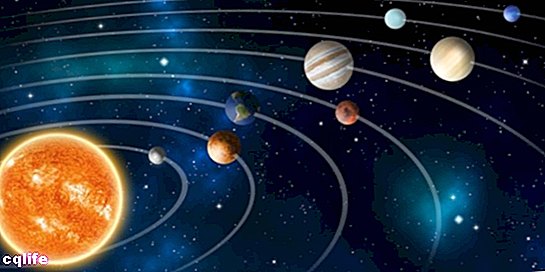
Our planet is part of the Solar System, which is the stellar system of bodies orbiting the Sun, in concentric elliptical paths, in each of which is one of the eight planets (in order of proximity to the Sun): Mercury, Venus, Earth, Mars, Jupiter, Saturn, Uranus and Neptune.
Also, around the Sun orbit a asteroid belt that separates them into two groups: inner planets (the first four) and outer planet (the last four), and further afield a set of trans-Neptunian objects (among them the ancient planet Pluto), in the so-called Oort Cloud and the Belt of Kuiper.
Milky Way

The Milky Way is the galaxy in which our Solar System is located. Is a galaxy barred spiral, which has the mass of 1012 times the Sun, in a diameter estimated to be 10,000 light years, equivalent to a trillion and a half kilometers.
Its name comes from the Greek mythology, and in Latin it means "Path of milk", alluding to the suckling of the hero Hercules by the goddess Hera, wife of Zeus. Our Solar System is located in one of the arms of the galaxy, in the Constellation of Orion, about 28,000 light years from the galactic center.
